The first page opened with an article titled "THE INDIAN TRAINING SCHOOL," that described the progress of the school, its Christian methods, the work of the former Ft. Marion prisoners of war preparing buildings for use, the importance of the town Sunday Schools, the school curriculum that emphasized farmwork for boys and housekeeping for girls…
Hayt, Ezra A.
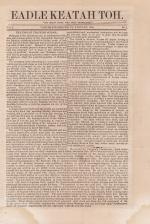
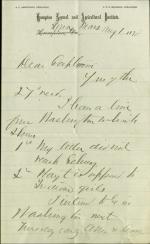
Samuel Chapman Armstrong informs Richard Henry Pratt that he has received a telegram from Washington, indicating that a previously sent letter was not received and that Commissioner of Indian Affairs Ezra Hayt is opposed to educating Indian girls. Armstrong notes that he will go to Washington to discuss the matter in person.
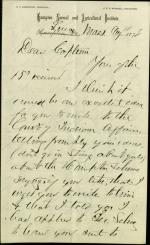
Samuel Chapman Armstrong writes to Richard Henry Pratt encouraging him to write to Commissioner of Indian Affairs Ezra Hayt to share Pratt's ideas about an Indian school. Armstrong provides some advice to Pratt about downplaying Pratt's views about Indian girls' education, how to find political allies in Washington, and how to play towards Hayt…
![Armstrong Informs Pratt That Recruitment Can Begin [Version 1] Armstrong Informs Pratt That Recruitment Can Begin, 1878 [Version 1]](/sites/default/files/styles/views_taxonomy/public/image-document/YALE_WA-MSS-S-1174_b01_f011_7_1.jpeg?itok=83Ev-tG0)
Samuel Chapman Armstrong writes to Richard Henry Pratt informing him that Commissioner of Indian Affairs Ezra Hayt has approved Pratt's idea to recruit Indian youth to attend the Hampton Institute. Armstrong discusses the construction of a new building to house them, and asks Pratt to have photographs taken of the party for promotional purposes…
![Armstrong Informs Pratt That Recruitment Can Begin [Version 2] Armstrong Informs Pratt That Recruitment Can Begin, 1878 [Version 2]](/sites/default/files/styles/views_taxonomy/public/image-document/YALE_WA-MSS-S-1174_b01_f011_8.jpeg?itok=U2czM5aB)
Samuel Chapman Armstrong writes to Richard Henry Pratt informing him that Commissioner of Indian Affairs Ezra Hayt has approved Pratt's idea to recruit Indian youth to attend the Hampton Institute. Armstrong discusses the construction of a new building to house them, and asks Pratt to have photographs taken of the party for promotional purposes…
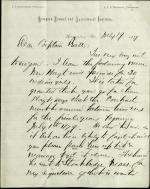
Samuel Chapman Armstrong of the Hampton Institute writes to Richard Henry Pratt informing him that Commissioner of Indian Affairs Hayt has promised a contract to recruit 20 Indian girls for the Hampton Institute. Armstrong discusses a desire to push Hayt for a larger contract for a higher recruitment number, and discusses logistics for Pratt's…
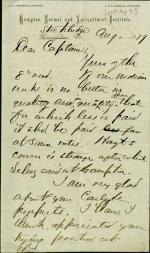
Samuel Chapman Armstrong of the Hampton Institute writes to Richard Henry Pratt about Pratt's attempts to establish a school at Carlisle. Armstrong notes that Commissioner of Indian Affairs Hayt seems less inclined to support their work. Armstrong also notes that he is glad to hear of Pratt's prospects with Carlisle, that he recognizes the "…
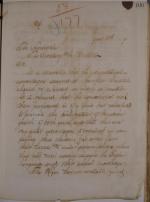
A letter wherein Commissioner of Indian Affairs Ezra A. Hayt writes to Secretary of the Interior Carl Schurz to recommend expanding the kind of educational program pursued at Hampton for "the civilization of Indian youth of both sexes… far away from their homes". Hayt requests that the Secretary of War approve the use of Carlisle Barracks in…
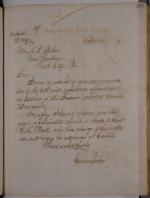
Commissioner of Indian Affairs Ezra A. Hayt's reply to a letter from H. E. Behn seeking appointment as a teacher at the Carlisle Indian School wherein Hayt suggests that he directly contact the head of the school, Richard Henry Pratt, to apply.
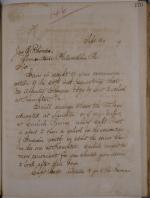
Commissioner of Indian Affairs Ezra A. Hayt's reply to a James E. Rhoades, a man who requested that two Shawnee boys who he is looking after "be sent to school at Hampton, Va." Hayt lets Rhoades know that he can arrange to have the boys be educated at Hampton Institute or Carlisle Indian School. Hayt describes Pratt's plan to go to Indian…
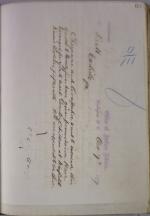
Telegram from Commissioner of Indian Affairs Ezra Hayt to Richard Henry Pratt informing him that Hayt has given permission for an increased recruitment quota from the Cheyenne and Arapaho Agency. The new number of young people will be 25.
Hayt also tells Pratt that the party of young people from Indian Territory will be meeting him…
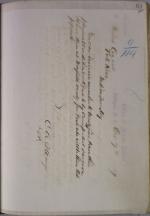
Telegram from Commissioner of Indian Affairs Ezra Hayt to the Agent of Cheyenne and Arapaho Agency John D. Miles which tells Miles that he has permission to recruit 25 young people to be sent to Carlisle.
Hayt orders Miles to have a physician certify these young people's health then send them to Winfield, Kansas to meet Pratt on…
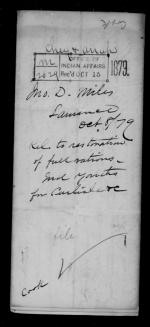
John D. Miles, Agent for the Cheyenne and Arapaho Agency, writes to Commissioner of Indian Affairs Ezra Hayt describing efforts to support the recruitment of young people for the Carlisle Indian School. He also refers to the situation having been "somewhat unsettled" recently due to a proposed reduction in rations. Transcript included. …
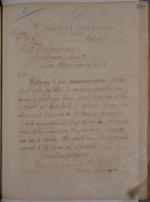
Commissioner of Indian Affairs Ezra A. Hayt informs Indian Agent V. T. McGillycuddy that there is no need to send more young people from the Pine Ridge Agency to the Carlisle Indian School. Hayt states that the quota from other agencies has been increased to meet the original estimate of students.
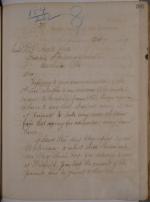
Commissioner of Indian Affairs Ezra A. Hayt's letter to Richard Henry Pratt communicating that it is unnecessary to recruit more children from the Pine Ridge Agency to attend the Carlisle Indian School. Hayt says that he does not think it best to take more young people from their home at present time. Hayt also lets Pratt know that he…
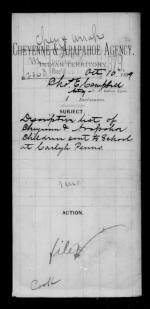
Acting agent Charles E. Campbell writes to Commissioner of Indian Affairs Ezra Hayt providing a list of the boys and girls who departed the Cheyenne and Arapaho Agency the previous day bound for Carlisle. He lists the 28 young people, along with their ages and the names of their fathers. Included is a statement from the agency physician, Frank…
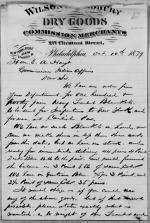
Wilson & Bradbury Dry Goods Commission Merchants informs Commissioner of Indian Affairs E. A. Hayt that they received an order from Carlisle for 140 heavy blankets. While those blankets could be manufactured, there are a variety of other blankets that they could send immediately. The merchants ask Hayt what they should do.
Note: This…
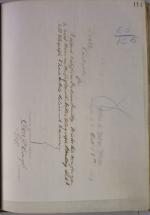
Telegram from the Commissioner of Indian Affairs Ezra Hayt to Richard Henry Pratt which informs Pratt that sixty people are expected to come to Carlisle from Indian Territory.
Hayt asks if Pratt will be able to meet this party on October 15th (in Winfield) or if Alfred J. Standing should be telegraphed instead. He promises that he…
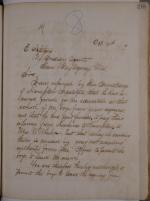
Letter from Commissioner of Indian Affairs Ezra E. Hayt to Indian Agent E. Stephens at Green Bay Agency authorizing him to recruit two Menominee boys from Keshena to go to Hampton Institute, payment for which had already been sent along to Mrs. W. Wheeler from General Armstrong. Hayt also suggests that he might meet up with Indian Agent Charles…
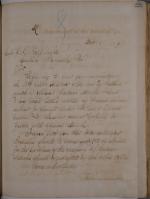
Commissioner of Indian Affairs Ezra E. Hayt's suggests that letters sent by the children cannot be classed under the head of official correspondence, and therefore those letters should not use "official" stamps." Hayt does encourage letter writing and tells Pratt to provide an estimate for the purchase of U.S. postage stamps.
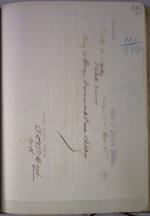
Telegram from Commissioner of Indian Affairs Ezra Hayt sent to Richard Henry Pratt or Alfred J. Standing. (Hayt did not know who was at Wichita, Kansas to receive the telegram.)
The telegram reads: "Bring on Osage, Pawnee, and Ponca children."
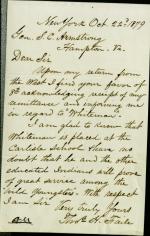
Samuel Chapman Armstrong of the Hampton Institute writes to Richard Henry Pratt discussing a recent conversation with Commissioner of Indian Affairs Ezra Hayt, and forwards a letter (on the reverse side of the page) to Armstrong from Thomas H. Fraile about Whiteman's placement at Carlisle.
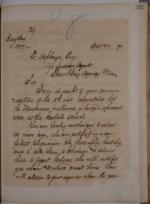
Letter from Commissioner of Indian Affairs Ezra E. Hayt to Indian Agent E. Stephens authorizing the selection of two more Menominee boys to be sent to the Carlisle Indian School. Hayt instructs Stephens to ensure their health is certified by a competent physician and then to rendezvous with Indian Agent Charles Crissey in Chicago.
…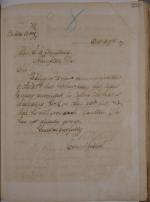
Commissioner of Indian Affairs Ezra A. Hayt writes to Samuel Chapman Armstrong at Hampton to report that Indian Agent Charles Crissey left Standing Rock and will likely reach Yankton soon.
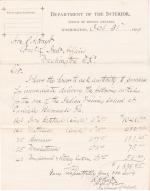
Richard Henry Pratt writes to Commissioner of Indian Affairs Ezra A. Hayt requesting authority to purchase dormitory furniture immediately needed at the Carlisle Indian School.
